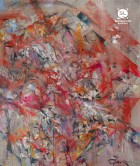There’s a lot going on in this story surrounding stability and destruction, and sometimes the fine line between the two. The final image in the story almost serves as an equilibrium or rather a state where stability and destruction can co-exist. How did you arrive at this ending where the mom tells the narrator she learned to walk during an earthquake?
I’m so glad you brought up that duality because it’s one of my current fixations. The ending was actually written separately with that duality in mind. I loved the idea of having the fragility of a child reckon with a destabilizing force and winning. I loved the strength in it and the interplay between what disrupts or destroys and what secures or solidifies, and how complicated it can be when that interplay occurs in a single entity. I thought the anecdote would find its own story someday, but when I started working on this story, I realized that Leni is the vanishing point where that duality exists, where stability and destruction contend, and happily so. Ending this story with it gives Leni a moment of tenderness after an incident fraught with congealed rage and (though she’d never admit it) disappointment, but more importantly it sets her up to be the lucky one her mom believes her to be, the phoenix emerging fresh from the ashes every time like it was no skin off her back specifically because she’s a force both stable and potentially destructive.
I admire that the big action happens in the beginning of the story. A different writer might have built up to the gnome bashing as a climactic moment, which in my opinion, might tie the story up instead of opening it up. I’m curious about your process in writing this piece. Were earlier drafts structured differently? Longer? Notably different in any other ways?
There was one prior version of this story—it was written in third-person and at the time, I had just become obsessed thematically with charged objects, so the gnomes still featured prominently. The story, though, began at the point where they’d already been destroyed. My intention was to explore the consequences of that destruction, but every time I tried to write past the opening scene, I got bored. I don’t believe in forcing a story, so I set it aside and forgot about it after getting three hundred words in. When I rediscovered it, it was important to me to consciously stay where it was most exciting for me to write. I knew I was starting where the climax would typically be, but I figured if this is the peak point of tension, if this is the story’s crisis point, then I want to stay at this peak, settle into this crisis, and see what happens.
I love this phrase “settling into the crisis.” I’m often trying to better balance settling in and keeping a story moving as sometimes I find these objectives at odds with one another, especially if the story starts after an explosive moment. Any thoughts on your experience striking this balance?
What always helps me is to first make a clear distinction between a story’s condition/premise and its raison d’être, and to then make a concentrated effort to linger in the places where those two concepts go head-to-head. I’ve found that more often than not, the story will clue us in to where those places are. A sudden change in rhythm, notes of reticence in the prose, a scene that’s just a hair too hard to get on paper, a powerhouse image at the right time—those are our instincts and our stories telling us, “Consider this,” or, “Dip your toe here,” or, “Find another way in,” or, “There, we’ve got it now.” We just have to trust our instincts and trust our stories.
If you were to flash forward twenty years, how would you envision Leni’s life? How do you think she would look back on the gnome bashing memory?
Thirty-three-year-old Leni is intentionally independent. She teaches high school Civics and has a well lit one-bedroom apartment that she shares with her dog, Omelet. She’s terrible at maintaining house plants and none of her furniture matches, but she’s not in tears over any of that. She’s just a few blocks away from where her mom lives and they’re as close as they’ve always been. She’s told the gnome story to her friends and to the guy she’s seeing, laughed with them and called herself a Gnome Terrorist. But it’s a vivid memory for her and always will be because it’s how she marks the end of her childhood. That’s what I know. What I hope is that my girl has found it in her to bring a gnome or two into that cozy apartment of hers, as a peaceful gesture or olive branch to the gnomes of yore.
I’m always curious about what other writers’ lives are like. So, if you don’t mind me asking: What’s your life like? Where do you live? How do you balance your writing life with other responsibilities?
I live in California and work in circulation services at my public library. The hours are great—enough daylight or moonlight before or after work for me to write by, when lightning strikes. It helps that I’m not a habitual, write-for-a-certain-number-of-hours-or-till-a-certain-word-count-per-day writer. I’ve tried that and have just ended up with absolute dreck every time. But I’m always writing in my head—not whole sentences or paragraphs, but forming images, turns of phrase, or ripe scenarios. I let that ferment and when I can see enough of the outline, then I sit down and write in a massive binge to fill it in. When I’m in the binge is when life gets problematic because then I hate having to do anything else. It sounds like systematic chaos, and it absolutely is, but it works for me.



 The core workshop of SmokeLong Fitness is all in writing, so you can take part from anywhere at anytime. We are excited about creating a supportive, consistent and structured environment for flash writers to work on their craft in a community. We are thrilled and proud to say that our workshop participants have won, placed, or been listed in every major flash competition. Community works.
The core workshop of SmokeLong Fitness is all in writing, so you can take part from anywhere at anytime. We are excited about creating a supportive, consistent and structured environment for flash writers to work on their craft in a community. We are thrilled and proud to say that our workshop participants have won, placed, or been listed in every major flash competition. Community works.